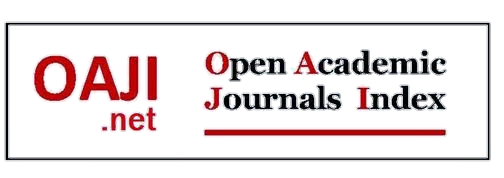The Influence of Green Human Resource Management (Green Hrm) on Environmental Performance Mediated by Green Motivation and Green Innovation
1Nahdan Al Aufa, 2RR. Erlina, 3Zainnur M. Rusdi
1,2,3Magister Management, Faculty of Economics and Business, University of Lampung, Lampung city
https://doi.org/10.47191/jefms/v8-i5-30ABSTRACT:
This study aims to investigate the influence of Green Human Resource Management (Green HRM) on Environmental Performance, mediated by Green Motivation and Green Innovation at PT PLN NP UP Sebalang. The research is essential due to the critical role of Green HRM practices in addressing global demands for environmental sustainability, especially in the electricity generation industry, which is currently transitioning towards clean energy. The research was conducted through a survey method utilizing questionnaires involving 126 respondents from the company's employees. The collected data were analyzed using Structural Equation Modeling (SEM) with SmartPLS software. The findings of this study support the proposed hypotheses, demonstrating that Green HRM positively and significantly affects Environmental Performance. Additionally, Green Motivation and Green Innovation mediate the effect of Green HRM on Environmental Performance. Thus, effective Green HRM implementation not only directly enhances environmental performance but also actively motivates employees to engage in environmentally friendly activities and fosters eco-friendly innovations. Based on these results, it is recommended that companies seeking to enhance their environmental performance should strengthen and integrate Green HRM practices with strategies focused on boosting employee motivation and promoting green innovations.
KEYWORDS:
Green Human Resource Management, Green Motivation, Green Innovation, Environmental Performance, Electricity Generation, Sustainability
REFERENCES:
1) A.U. Din, Y. Yang, R. Yan, A. Wei, dan M. Ali, “Growing success with sustainability: The influence of Green HRM, innovation, and competitive advantage on environmental performance in the manufacturing industry,” Heliyon, vol. 10, no. 10, Mei 2024, doi: 10.1016/j.heliyon.2024.e30855.
2) Ahmad, I., & Umrani, W. A. (2019). The impact of ethical leadership style on job satisfaction: Mediating role of perception of Green HRM and psychological safety. Leadership and Organization Development Journal, 40(5), 534–547. https://doi.org/10.1108/LODJ-12-2018-0461
3) Ahmed, M., Guo, Q., Qureshi, M. A., Raza, S. A., Khan, K. A., & Salam, J. (2021). Do green HR practices enhance green motivation and proactive environmental management maturity in hotel industry? International Journal of Hospitality Management, 94. https://doi.org/10.1016/j.ijhm.2020.102852
4) Appelbaum, E., Bailey, T., Berg, P., & Kalleberg, A. L. (2000). Manufacturing advantage: Why high-performance work systems pay off. Cornell University Press.
5) Barney, J. (1991). Firm Resources and Sustained Competitive Advantage. In Journal of Management (Vol. 17, Nomor 1, hal. 99–120). https://doi.org/10.1177/014920639101700108
6) Chen, Y., Lai, S., & Wen, C. (2006). The influence of Green Innovation performance on corporate advantage in Taiwan. Journal of Business Ethics, 67(4), 331-339. https://link.springer.com/article/10.1007/s10551-006-9025-5
7) Din, A. U., Yang, Y., Yan, R., Wei, A., & Ali, M. (2024). Growing success with sustainability: The influence of Green HRM, innovation, and competitive advantage on environmental performance in the manufacturing industry. Heliyon, 10(10), e30855. https://doi.org/10.1016/j.heliyon.2024.e30855
8) Dumont J, Shen J, X. D. (2016). Effects Of Green HRM Practices On Employee Workplace Green Behavior: The Role Of Psychological Green Climate And Employee Green Values. Human Resource Management, 45(1), 127–145. https://doi.org/10.1002/hrm
9) Fang, L., Shi, S., Gao, J., & Li, X. (2022). The mediating role of green innovation and green culture in the relationship between green human resource management and environmental performance. In PLoS ONE (Vol. 17, Nomor 9 September). journals.plos.org. https://doi.org/10.1371/journal.pone.0274820
10) Gilal, F. G., Ashraf, Z., Gilal, N. G., Gilal, R. G., & Channa, N. A. (2019). Promoting environmental performance through green human resource management practices in higher education institutions: A moderated mediation model. Corporate Social Responsibility and Environmental Management, 26(6), 1579–1590. https://doi.org/10.1002/csr.1835
11) Ghozali, I. (2012). Aplikasi analisis multivariate dengan program IBM SPSS. Universitas Diponegoro
12) Graves, L. M., Sarkis, J., & Zhu, Q. (2013). How transformational leadership and Employee motivation combine to predict Employee proenvironmental behaviors in China. Journal of Environmental Psychology, 35, 81-91.
13) Hair, J.F., Black, W.C, Babin, B.J., and Anderson, R.E. 2019. Multivariate Data Analysis, Eighth edition. United Kingdom: Cengage Learning EMEA
14) Hajj Hussein, S., & Bou Zakhem, N. (2024). The Impact of Green Human Resource Management Practices on Brand Citizenship Behavior and Employee Turnover Intention: A Mixed Methods Approach. Sustainability (Switzerland), 16(15). https://doi.org/10.3390/su16156528
15) Hart, S. L. (1995). A natural-resource-based view of the firm. Academy of Management Review, 20(4), 986-1014.
16) J. K, “Green HRM and Employee green behavior in the manufacturing firms: do psychological green climate and Employee green commitment matter?,” Soc. Responsib. J., vol. 19, no. 10, hal. 1852–1869, 2023, doi: 10.1108/SRJ-11-2022-0477.
17) J. Liu dan J. Liu, “The greater the incentives, the better the effect? Interactive moderating effects on the relationship between Green Motivation and green creativity,” Int. J. Contemp. Hosp. Manag., vol. 35, no. 3, hal. 919–932, Jan 2023, doi: 10.1108/IJCHM-03-2022-0340.
18) Jabbour, C. J. C., & de Sousa Jabbour, A. B. L. (2016). Green human resource management and green supply chain management: Linking two emerging agendas. Journal of Cleaner Production, 112, 1824-1833.
19) Jackson, S. E., Renwick, D. W., Jabbour, C. J., & Muller-Camen, M. (2011). State-of-the-art and future directions for green human resource management: Introduction to the special issue. German Journal of Human Resource Management, 25(2), 99-116.
20) Junsheng, H., Masud, M. M., Akhtar, R., & Rana, M. S. (2020). The mediating role of Employees’ Green Motivation between exploratory factors and green behaviour in the malaysian food industry. Sustainability (Switzerland), 12(2). https://doi.org/10.3390/su12020509
21) Khan, A. J., Ul Hameed, W., Iqbal, J., Shah, A. A., Tariq, M. A. U. R., & Bashir, F. (2022). Green HRM and employee efficiency: The mediating role of employee motivation in emerging small businesses. Frontiers in Environmental Science, 10(November), 1–10. https://doi.org/10.3389/fenvs.2022.1044629
22) Kim, S. H., Kim, M., Han, H. S., & Holland, S. (2019). The determinants of hospitality Employees' pro-environmental behaviors: The moderating role of generational differences. International Journal of Hospitality Management, 44, 121-136.
23) Lamm, E., Tosti-Kharas, J., & King, C. E. (2015). Empowering Employee sustainability: Perceived organizational support toward the environment. Journal of Business Ethics, 128(1), 207-220.
24) Locke, E. A., & Latham, G. P. (2002). Building a practically useful theory of goal setting and task motivation: A 35-year odyssey. American Psychologist, 57(9), 705-717.
25) Lyle¬ Yorks, Amy¬ Lui¬ Abel, Denise¬ Rotatori. (2022). Strategic Human Resource Development in Practice Leveraging Talent for Sustained Performance in the Digital Age of AI. Springer. (“Lyle˜Yorks Amy˜Lui˜Abel Denise˜Rotatori Strategic Human ...Springer”) New York
26) M. A. Al-Hawari, S. Quratulain, dan S. B. Melhem, “How and when frontline Employees’ environmental values influence their green creativity? Examining the role of perceived work meaningfulness and Green HRM practices,” J. Clean. Prod., vol. 310, Agu 2021, doi: 10.1016/j.jclepro.2021.127598.
27) M. Aboramadan dan O. M. Karatepe, “Green human resource management, perceived green organizational support and their effects on hotel Employees’ behavioral outcomes,” Int. J. …, 2021, doi: 10.1108/IJCHM-12-2020-1440.
28) M. Ahmed, Q. Guo, M. Asif, S. Ali, K. Akram, dan J. Salam, “International Journal of Hospitality Management Do green HR practices enhance Green Motivation and proactive environmental management maturity in hotel industry ?,” Int. J. Hosp. Manag., vol. 94, no. January, hal. 102852, 2021, doi: 10.1016/j.ijhm.2020.102852.
29) M. Jam dan W. N. Jamal, “Impact of Green Human Resources Management Practices on Organizational Sustainability and Employee Retention: An Empirical Study Related to Educational Institutions,” iRASD J. Manag., vol. 2, no. 1, hal. 38–48, 2020, doi: 10.52131/joe.2020.0201.0014.
30) Mazur, B. (2014). Sustainable human resource management in theory and practice. Economics and Management, 1, 158- 170.
31) Mehregan, M., & Mehregan, H. (2018). Green human resource management: A review of the literature. Journal of Management and Sustainability, 8(3), 73-82.
32) Norton, T. A., Parker, S. L., Zacher, H., & Ashkanasy, N. M. (2015). Employee green behavior: A theoretical framework, multilevel review, and future research agenda. Organization & Environment, 28(1), 103-125.
33) Norton, T. A., Parker, S. L., Zacher, H., & Ashkanasy, N. M. (2015). Employee green behavior: A theoretical framework, multilevel review, and future research agenda. Organization & Environment, 28(1), 103-125.
34) O'Donohue, W., & Torugsa, N. (2016). The moderating effect of 'Green' HRM on the association between proactive environmental management and financial performance in small firms. The International Journal of Human Resource Management, 27(2), 239-261.
35) Ones, D. S., & Dilchert, S. (2012). Environmental sustainability at work: A call to action. Industrial and Organizational Psychology, 5(4), 444-466.
36) Paillé, P., Chen, Y., Boiral, O., & Jin, J. (2014). The impact of human resource management on environmental performance: An Employee-level study. Journal of Business Ethics, 121(3), 451-466.
37) R. Dewi dan A. Rahmianingsih, “Meningkatkan Nilai Perusahaan Melalui Green Innovation Dan Eco-Effisiensi,” Ekspansi J.Ekon. Keuangan, Perbank. dan Akunt., vol. 12, no. 2, hal. 225–243, 2020, doi: 10.35313/ekspansi.v12i2.2241.
38) R. Markey, J. McIvor, M. O’Brien, dan C. F. Wright, “Reducing carbon emissions through Employee participation: evidence from Australia,” Ind. Relations J., vol. 50, no. 1, hal. 57–83, 2019, doi: 10.1111/irj.12238.
39) R. Sugiharto dan L. Alhazami, “Pengaruh Green Innovation Dan Green Organizational Culture Terhadap Company Performance Melalui Green Competitive Advantage (Studi Kasus Pada Gerai Kopi XYZ),” J. Manaj. dan Bisnis Madani, vol. 5, no. 2, hal. 57–82, 2023, doi: 10.51353/jmbm.v5i2.769.
40) Rehman, S. U., Kraus, S., Shah, S. A., Khanin, D., & ... (2021). Analyzing the relationship between green innovation and environmental performance in large manufacturing firms. In … Forecasting and Social …. Elsevier. https://www.sciencedirect.com/science/article/pii/S004016252031307X
41) Ren, S., Tang, G., & Jackson, S. E. (2018). Green human resource management research in emergence: A review and future directions. Asia Pacific Journal of Management, 35(3), 769-803.
42) Renwick, D. W. S., Redman, T., & Maguire, S. (2013). Green Human Resource Management: A Review and Research Agenda*. International Journal of Management Reviews, 15(1), 1–14. https://doi.org/10.1111/j.1468-2370.2011.00328.x
43) Robertson, J. L., & Barling, J. (2013). Greening organizations through leaders' influence on Employees' pro‐environmental behaviors. Journal of Organizational Behavior, 34(2), 176-194.
44) Roscoe, S., Subramanian, N., Jabbour, C. J. C., & Chong, T. (2019). Green human resource management and the enablers of green organisational culture: Enhancing a firm’s environmental performance for sustainable development. Business Strategy and the Environment, 28(5), 737–749. https://doi.org/10.1002/bse.2277
45) Ryan, R. M., & Deci, E. L. (2000). Self-determination theory and the facilitation of intrinsic motivation, social development, and well-being. American Psychologist, 55(1), 68-78.
46) Sekaran, Uma & Bougie, Roger. (2018). Research Methods for Business: A Skill-Building Approach (Seventh Edition). Italy: Printer Trento Srl.
47) S. Kumar, M. Del, R. Chierici, dan D. Graziano, “Technological Forecasting & Social Change Green Innovation and environmental performance : The role of green transformational leadership and green human resource management,” Technol. Forecast. Soc. Chang., vol. 150, no. October 2019, hal. 119762, 2020, doi: 10.1016/j.techfore.2019.119762.
48) S. Ullah, “Green intellectual capital and Green HRM enabling organizations go green: mediating role of Green Innovation,”Int. J. Innov. Sci., vol. 15, no. 2, hal. 245–259, 2023, doi: 10.1108/IJIS-12-2021-0222.
49) S. Wahyuni, M. Nurhayati, T. H. Sulistyanto, dan A. Marlina, “Achieving Green Performance through Green Human Resources Management, Green Knowledge Management and Green Competency,” Int. J. Appl. Manag. Bus., vol. 1, no. 2, hal. 81–94, 2023, doi: 10.54099/ijamb.v1i2.709.
50) Shen, J., Dumont, J., & Deng, X. (2018). Employees’ Perceptions of Green HRM and Non-Green Employee Work Outcomes: The Social Identity and Stakeholder Perspectives. Group and Organization Management, 43(4), 594–622. https://doi.org/10.1177/1059601116664610
51) Singh, S. K., Giudice, M. Del, Chierici, R., & Graziano, D. (2020). Green innovation and environmental performance: The role of green transformational leadership and green human resource management. Technological Forecasting and Social Change, 150(October 2019), 119762. https://doi.org/10.1016/j.techfore.2019.119762
52) Singh, S. K., Giudice, M. Del, Chierici, R., & Graziano, D. (2020). Green Innovation and environmental performance: The role of green transformational leadership and green human resource management. Technological Forecasting and Social Change, https://doi.org/10.1016/j.techfore.2019.119762
53) Soewarno, B. Tjahjadi, dan F. Fithrianti, “Green Innovation strategy and Green Innovation: The roles of green organizational identity and environmental organizational legitimacy,” Manag. Decis., vol. 57, no. 11, hal. 3061–3078, 2019, doi: 10.1108/MD-05-2018-0563.
54) Stern, P. C. (2000). New environmental theories: Toward a coherent theory of environmentally significant behavior. Journal of Social Issues, 56(3), 407-424.
55) Sugiyono (2021). Metode Penelitian Sumber Daya Manusia. (Kuantitatif, Kualitatif dan Studi Kasus). Alfabeta. Bandung
56) Susanto, M. P., Rokhyadi, A., Saputra, P., Firsalam, A. F., & Rahmah, A. N. (2024). The effect of employee green involvement, green motivation , and green behavior on green business performance in textile companies in Indonesia. 4(2), 35–49.
57) Ud, Y. Ya ng, R. Yan, A. Wei, dan M. Ali, “Heliyon Growing success with sustainability : The influence of Green HRM , innovation , and competitive advantage on environmental performance in the manufacturing industry,” Heliyon, vol. 10, no. 10, hal. e30855, 2024, doi: 10.1016/j.heliyon.2024.e30855.
58) Unsworth, K. L., Dmitrieva, A., & Adriasola, E. (2013). Changing behaviour: Increasing the effectiveness of workplace
59) interventions in creating pro‐environmental behaviour change. Journal of Organizational Behavior, 34(2), 211-229.
60) Wiredu, J., Yang, Q., Saljoughipour, S., Caroline Olufunke, E., Sampene, A. K., & Brenya, R. (2023). Stimulating environmental performance through green human resource practice: does green transformational leadership matter? Journal of Infrastructure, Policy and Development, 7(1). https://doi.org/10.24294/jipd.v7i1.2127
61) Yusliza, M. Y., Yong, J. Y., Tanveer, M. I., Ramayah, T., Faezah, J. N., & Muhammad, Z. (2020). A structural model of the impact of green intellectual capital on sustainable performance. Journal of Cleaner Production, 249, 119334.
62) Z. Younis dan S. Hussain, “Green Transformational Leadership: Bridging the gap between Green HRM Practices and Environmental Performance through Green Psychological Climate,” Sustain. Futur., vol. 6, Des 2023, doi: 10.1016/j.sftr.2023.100140.
















